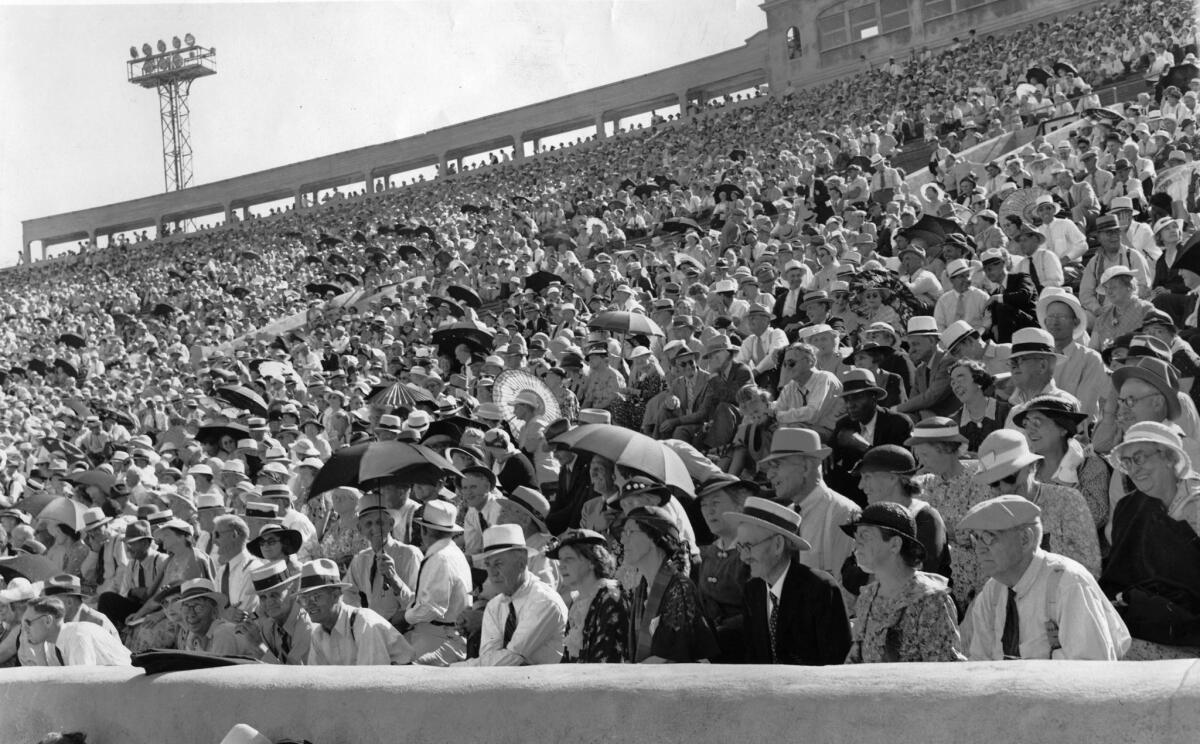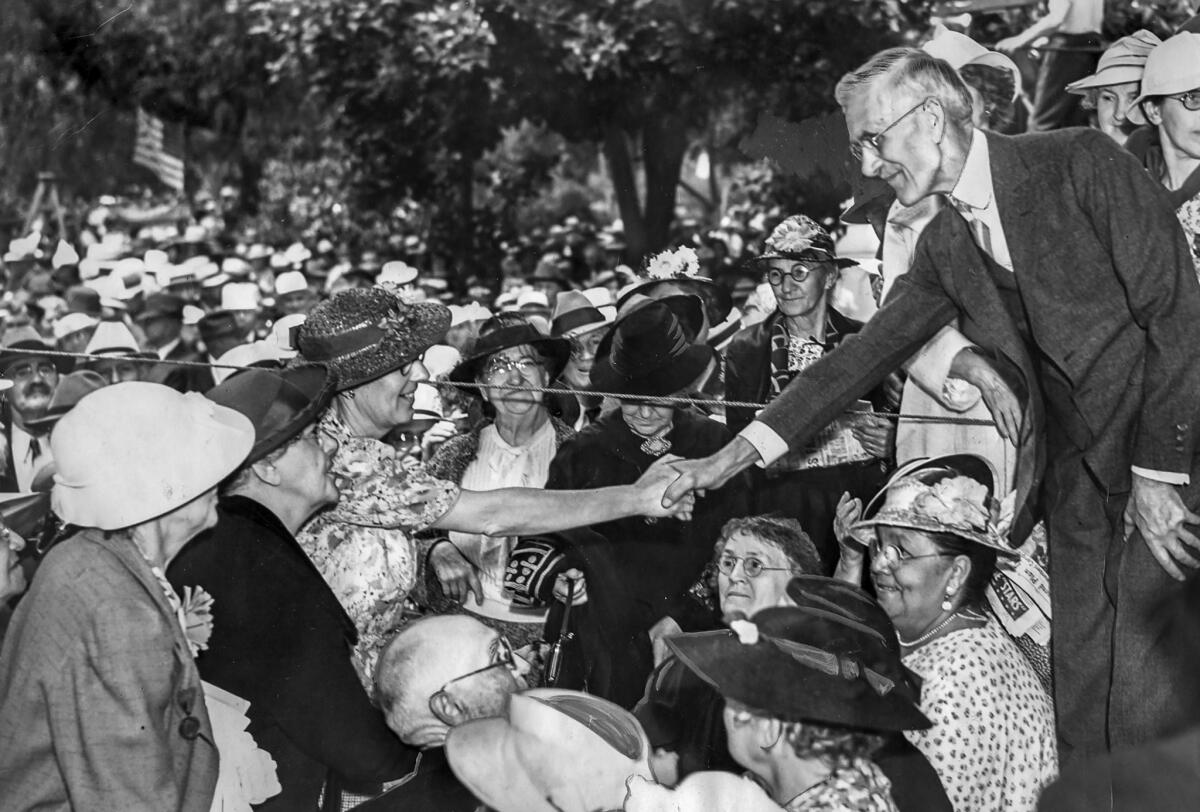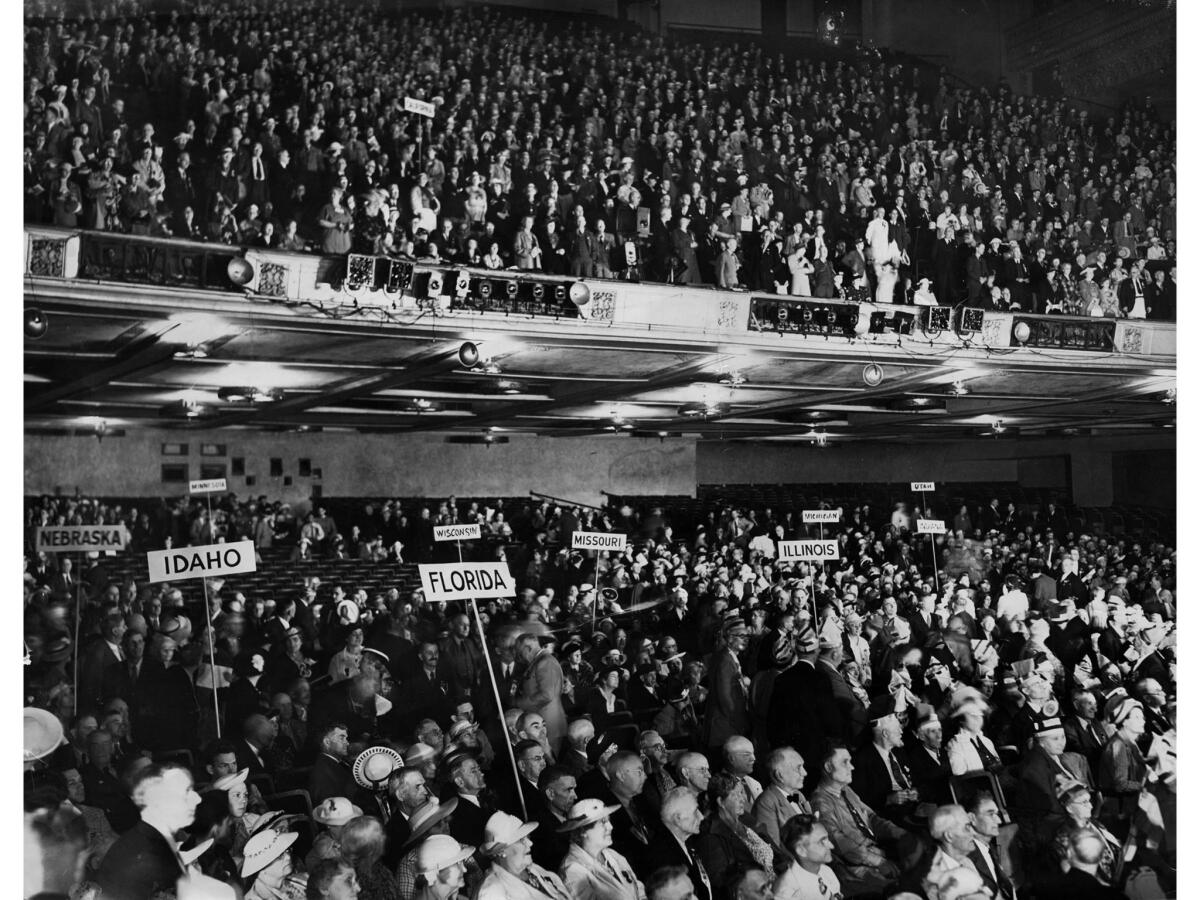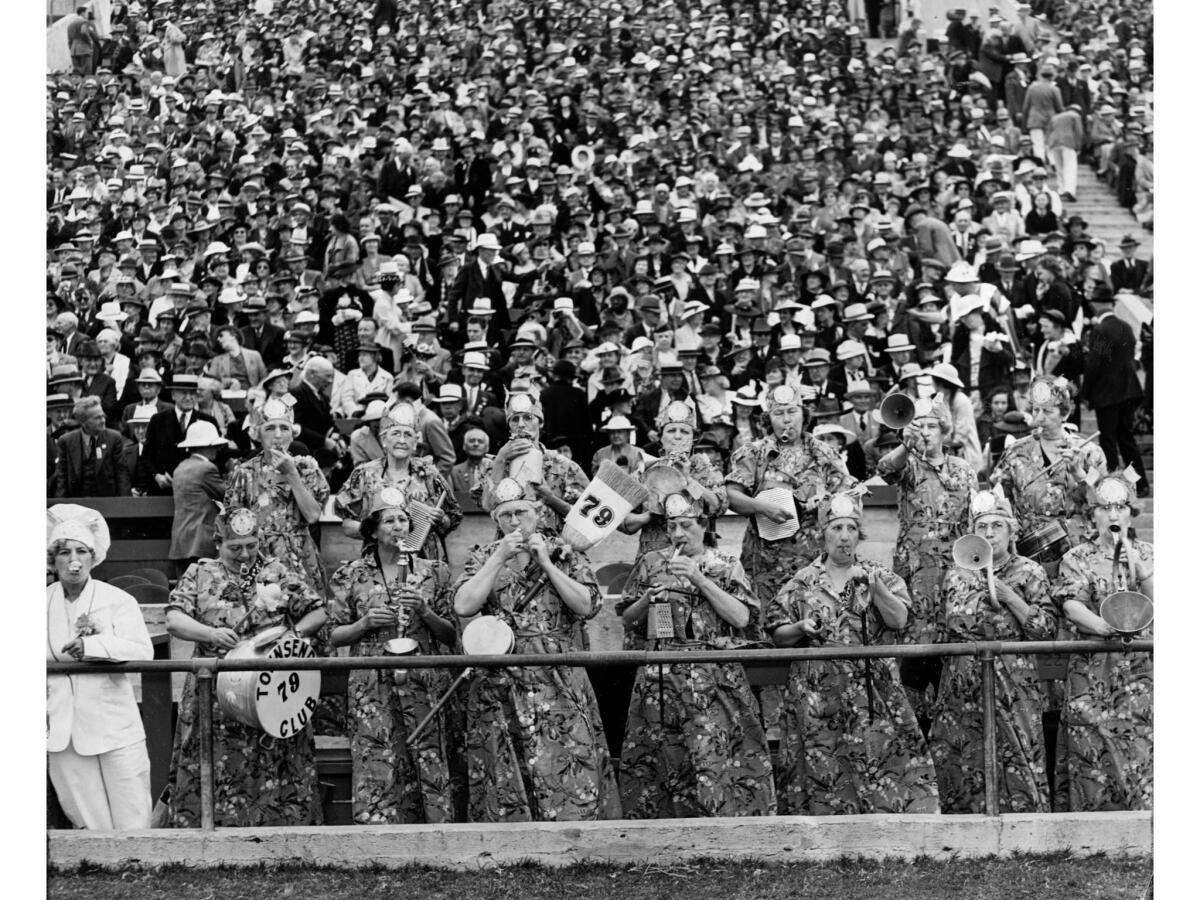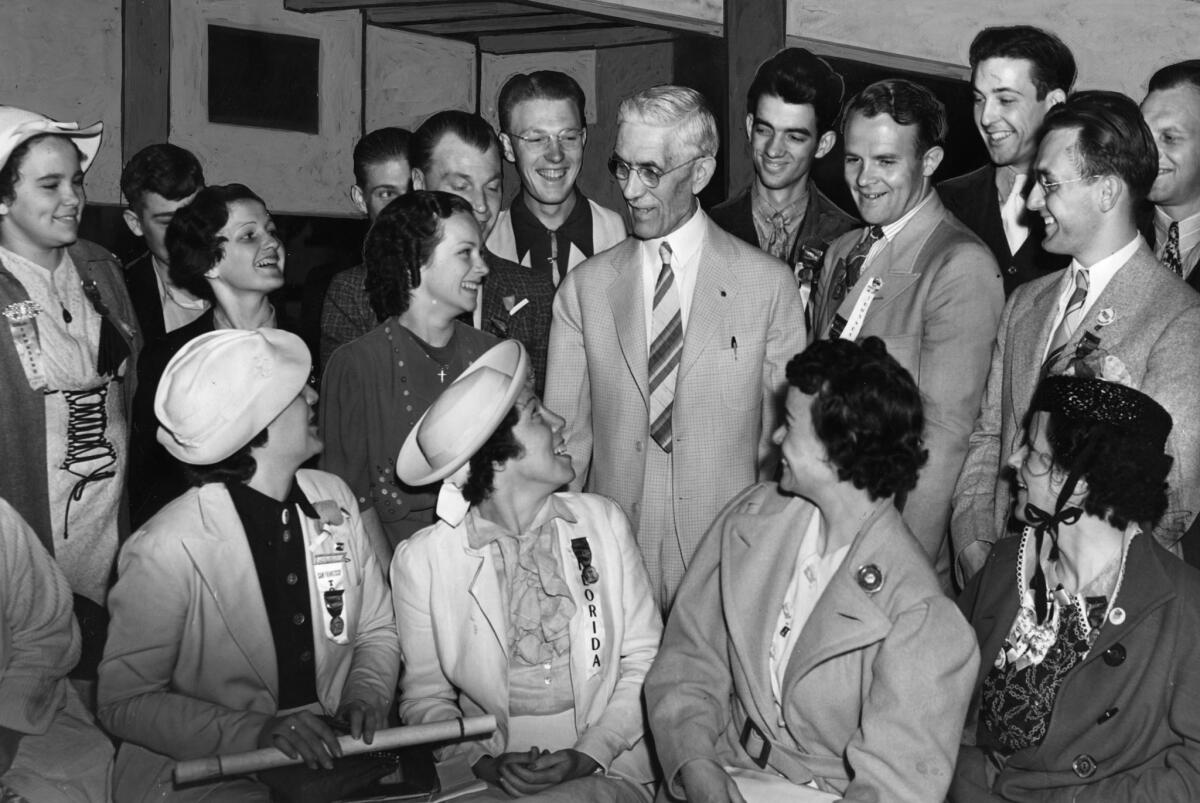From the Archives: Long Beach doctor proposes the Townsend Pension Plan
- Share via
During the Great Depression of the 1930s, Americans became aware of the acute financial need of the elderly. Several old-age pension plans were promoted. The Old-Age Revolving Pension Plan, a.k.a. the Townsend Plan, became the most popular. Congress reacted by establishing the Social Security Administration.
This Aug. 12, 1985, Los Angeles Times article looked back on those days:
Dr. Francis Townsend, an assistant medical officer in Long Beach, looked out his window one day in 1933 and saw three elderly women picking through garbage cans.
"I swore and I ranted, and I let my voice bellow with wild hatred I had for things as they were," Townsend told biographer Richard Milne two years later. So he conceived one of the sweeping social movements of the 1930s, a proposal to give every person over 60 a government-guaranteed pension of $200 a month.
Townsend's plan drew millions of adherents, a nationwide flood of publicity and the nervous concern of politicians in Washington. Pressure for the Townsend plan, which would have required a 2% national sales tax, made it possible for Congress to approve the less-generous Social Security system proposed by President Franklin D. Roosevelt.
When Social Security began paying benefits in 1940, the maximum payment was $41.20 a month.
"We were the biggest movement in America at that time," said the Rev. John D. Lee, president of a senior citizens club in Los Angeles who, as a young Baptist minister in western Massachusetts, had allowed Townsend supporters to hold mass meetings in his church. "We were bigger than organized labor, bigger than the Republican or Democratic parties.
"Townsend's plan, made public for the first time in a letter to the editor of the Long Beach Press Telegram on Sept. 30, 1933, drew an immediate and overwhelming response. Within two years, there were 7,000 Townsend clubs throughout the nation with 1.5 million members, according to Abraham Holtzman's book, "The Townsend Movement."
The movement included a 16-page weekly newspaper, a Townsend Youth Assn. and a Townsend "Women's Drill Corps, "whose complicated marches and striking uniforms contributed color to the annual national conventions," according to Holtzman's study.
In "The Roosevelt I Knew," former Labor Secretary Frances Perkins wrote: "One hardly realizes nowadays how strong was the sentiment in favor of the Townsend plan and other exotic schemes for giving the aged a weekly income."

Despite the introduction of Social Security in 1935, the Townsend Plan remained popular for years. When Townsend passed away on Sep. 1, 1960, the Townsend Plan movement still had its national organization and 400 local chapters.
In 1938, the Townsend Pension Plan national convention was held in Los Angeles.
For more background, visit the Social Security Administration’s history of the Townsend Plan Movement.
